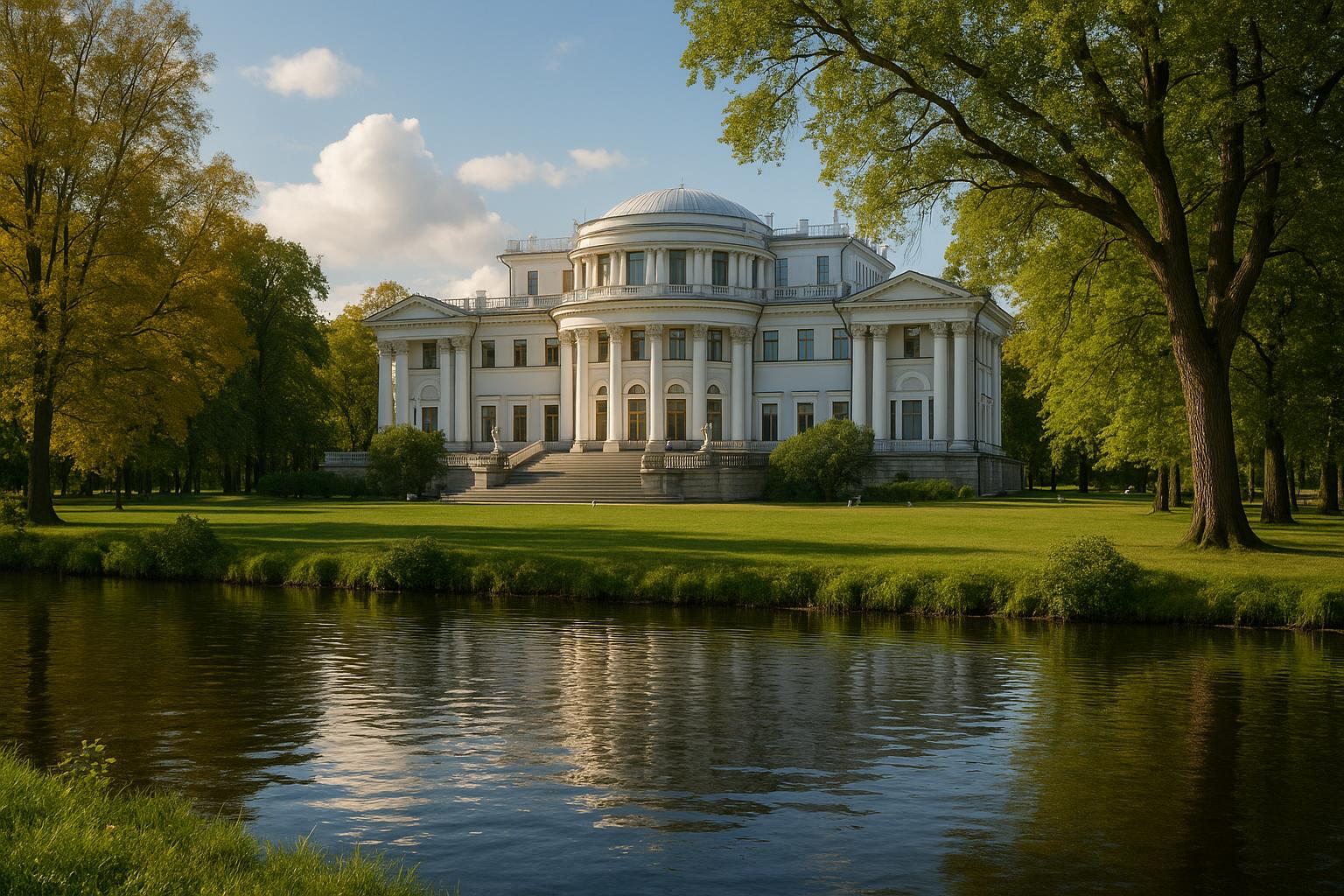Overview of Yelagin Island and Park
Yelagin Island is a notable recreational and cultural destination located in St. Petersburg, Russia. Flanked by the waters of the Neva River delta, it forms a pivotal part of the city’s charming and intricate landscape. Revered for its verdant park and storied architectural landmarks, Yelagin Island captivates visitors seeking leisure and learning.
Geographical Context
Nestled snugly between the Greater and Middle Nevka Rivers and the Krestovka River, Yelagin Island boasts a setting that feels naturally secluded. The island spans approximately 94 hectares, offering a verdant retreat from the urban hustle and bustle. Its location within the maze of St. Petersburg’s waterways adds an element of allure, positioning it as an idyllic getaway for local residents and tourists alike. The confluence of rivers not only enriches the island’s scenery but also contributes to its tranquil ambiance, providing a sanctuary from the city’s energetic pace.
Historical Background
The roots of Yelagin Island’s storied past can be traced back to the early 18th century when it emerged as an estate. It takes its name from Ivan Yelagin, an influential Russian statesman who acquired the island in the mid-1700s. The early 19th century marked a transformative period when the estate evolved into an imperial residence, encapsulating the grandeur of the era. Renowned architect Carlo Rossi played a decisive role in crafting its architectural essence, most notably through the design of Yelagin Palace. Rossi’s touch imbued the estate with neoclassical charm, solidifying its status as an exemplar of Russian architecture from that period.
Yelagin Palace
At the heart of the island stands Yelagin Palace, a shining exemplar of Russian neoclassical architecture. Completed in 1822, this palace served primarily as a summer residence for the imperial family. Today, it functions as a museum, offering visitors a glimpse into the opulent lifestyle once led by the Russian aristocracy. Within its halls, visitors encounter period furnishings and a variety of exhibitions, each revealing layers of history. The palace’s opulence mirrors the elegance of a bygone era, inviting guests to explore not only its architectural grandeur but also the rich tapestry of life it once hosted.
Modern Use and Attractions
Presently, Yelagin Island and Park stand as popular recreational havens, drawing both locals and tourists to its verdant embrace. The park offers a diverse array of activities and attractions that cater to various interests. Whether indulging in leisurely walks or energetic sporting endeavors, visitors can relish the park’s expansive landscapes and vibrant atmosphere.
Botanical Features
Yelagin Park is distinguished by its botanical diversity, housing a wide array of flora, including numerous exotic plant species. Landscapes within the park are meticulously curated to provide an authentic representation of Russian horticultural traditions. Seasonal blooms and trees alter the vistas and infuse the environment with dynamism, ensuring a continuously evolving visual palette that enchants visitors year-round. The park’s botanical wonders symbolize not just natural beauty but a dedication to preserving horticultural heritage, inviting guests to immerse themselves in both the historical and botanical richness of the setting.
Leisure and Sports
The park emerges as a vibrant hub for both organized and spontaneous leisure pursuits. Facilities are available for renting equipment such as bicycles and rowing boats, encouraging active engagement with the outdoors. Additionally, seasonal events hosted within the park, including festivals and cultural performances, enrich the cultural calendar and enhance the park’s lively atmosphere. These activities offer a counterpoint to the tranquility, presenting dynamic opportunities for visitors to participate actively in the vibrant tapestry of park life, fostering a sense of community and cultural connection.
Accessibility and Visitor Information
Accessibility to Yelagin Island is well-facilitated through public transportation, with nearby metro stations and bus stops providing easy access. Visitors can enjoy free entry to the park itself, although certain attractions, such as Yelagin Palace, may require a ticket. For detailed information on visiting hours, special events, and the latest updates, interested individuals might refer to the official Yelagin Island Park website. This portal serves as a gateway to up-to-date details, facilitating efficient planning for those eager to explore the island’s multifaceted offerings.
Conclusion
Yelagin Island and Park provide a holistic experience, seamlessly marrying natural beauty, historical architecture, and cultural engagement. Whether one’s passion lies in delving into Russian history or relishing outdoor activities, Yelagin Island offers a picturesque setting that accommodates diverse interests. The island stands as a testament to St. Petersburg’s heritage and contemporary vibrancy, promising memorable encounters with both the past and present for all who visit.

